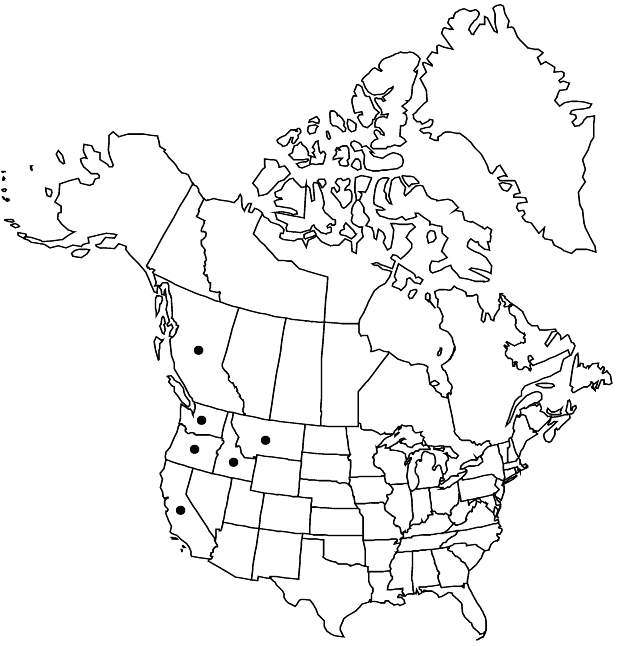Difference between revisions of "Mitella caulescens"
in J. Torrey and A. Gray, Fl. N. Amer. 1: 586. 1840 ,.
FNA>Volume Importer |
imported>Volume Importer |
||
| (5 intermediate revisions by 2 users not shown) | |||
| Line 1: | Line 1: | ||
{{Treatment/ID | {{Treatment/ID | ||
|accepted_name=Mitella caulescens | |accepted_name=Mitella caulescens | ||
| − | |accepted_authority=Nuttall | + | |accepted_authority=Nuttall |
|publications={{Treatment/Publication | |publications={{Treatment/Publication | ||
|title=in J. Torrey and A. Gray, Fl. N. Amer. | |title=in J. Torrey and A. Gray, Fl. N. Amer. | ||
| Line 7: | Line 7: | ||
}} | }} | ||
|common_names=Creeping mitrewort | |common_names=Creeping mitrewort | ||
| + | |special_status={{Treatment/ID/Special_status | ||
| + | |code=E | ||
| + | |label=Endemic | ||
| + | }} | ||
|basionyms= | |basionyms= | ||
|synonyms={{Treatment/ID/Synonym | |synonyms={{Treatment/ID/Synonym | ||
|name=Mitellastra caulescens | |name=Mitellastra caulescens | ||
|authority=(Nuttall) Howell | |authority=(Nuttall) Howell | ||
| + | |rank=species | ||
}} | }} | ||
|hierarchy=Saxifragaceae;Mitella;Mitella caulescens | |hierarchy=Saxifragaceae;Mitella;Mitella caulescens | ||
| Line 34: | Line 39: | ||
-->{{#Taxon: | -->{{#Taxon: | ||
name=Mitella caulescens | name=Mitella caulescens | ||
| − | + | |authority=Nuttall | |
| − | |authority=Nuttall | ||
|rank=species | |rank=species | ||
|parent rank=genus | |parent rank=genus | ||
| Line 48: | Line 52: | ||
|publication title=in J. Torrey and A. Gray, Fl. N. Amer. | |publication title=in J. Torrey and A. Gray, Fl. N. Amer. | ||
|publication year= | |publication year= | ||
| − | |special status= | + | |special status=Endemic |
| − | |source xml=https:// | + | |source xml=https://bitbucket.org/aafc-mbb/fna-data-curation/src/2e0870ddd59836b60bcf96646a41e87ea5a5943a/coarse_grained_fna_xml/V8/V8_219.xml |
|genus=Mitella | |genus=Mitella | ||
|species=Mitella caulescens | |species=Mitella caulescens | ||
Latest revision as of 22:42, 5 November 2020
Plants usually stoloniferous. Flowering stems 13–45 cm. Leaves: petiole 1.5–14 cm, short stipitate-glandular and, usually, long stipitate-glandular, longer hairs spreading to retrorse, white; blade broadly cordate to broadly ovate, ± as long as wide, 1.2–6.5(–8.5) × 1.4–7(–8.2) cm, margins 3-, 5-, or 7-lobed, crenate-dentate, irregularly ciliate, apex of terminal lobe acute to obtuse, surfaces short stipitate-glandular and sparsely long stipitate-glandular; cauline leaves 1–3, proximal or mid cauline, alternate, sessile or petiolate, blade 0.3–4.3(–6) × 0.4–4.4(–7) cm. Inflorescences 1–2(–4), remotely 5–25-flowered, 1(–2) flowers per node, (anthesis basipetalous), not secund, 13–45 cm, short stipitate-glandular and sparsely long stipitate-glandular proximally, short stipitate-glandular distally. Pedicels 2–8 mm, short stipitate-glandular. Flowers: hypanthium broadly campanulate, 1.5–2 × 3–5.5 mm; sepals spreading or recurved, greenish, deltate-ovate, 0.9–1.5 × 1.4–2 mm; petals whitish green or greenish, sometimes purple tinged proximally, 5–9-lobed, 3–4 mm, lobes linear, lateral lobes spreading; stamens 5, opposite sepals; filaments usually purple proximally and white distally, sometimes entirely white, 0.6–0.9 mm; anthers 0.2–0.4 × 0.2–0.4 mm; ovary 1/2 inferior; styles erect or spreading, cylindric, 0.8–1.1 mm; stigmas unlobed. Seeds reddish purple or dark reddish brown, 0.7–1 mm, pitted. 2n = 14.
Phenology: Flowering Apr–Jul.
Habitat: Deep woods, meadows, stream banks
Elevation: 0-2100 m
Distribution

B.C., Calif., Idaho, Mont., Oreg., Wash.
Discussion
Selected References
None.